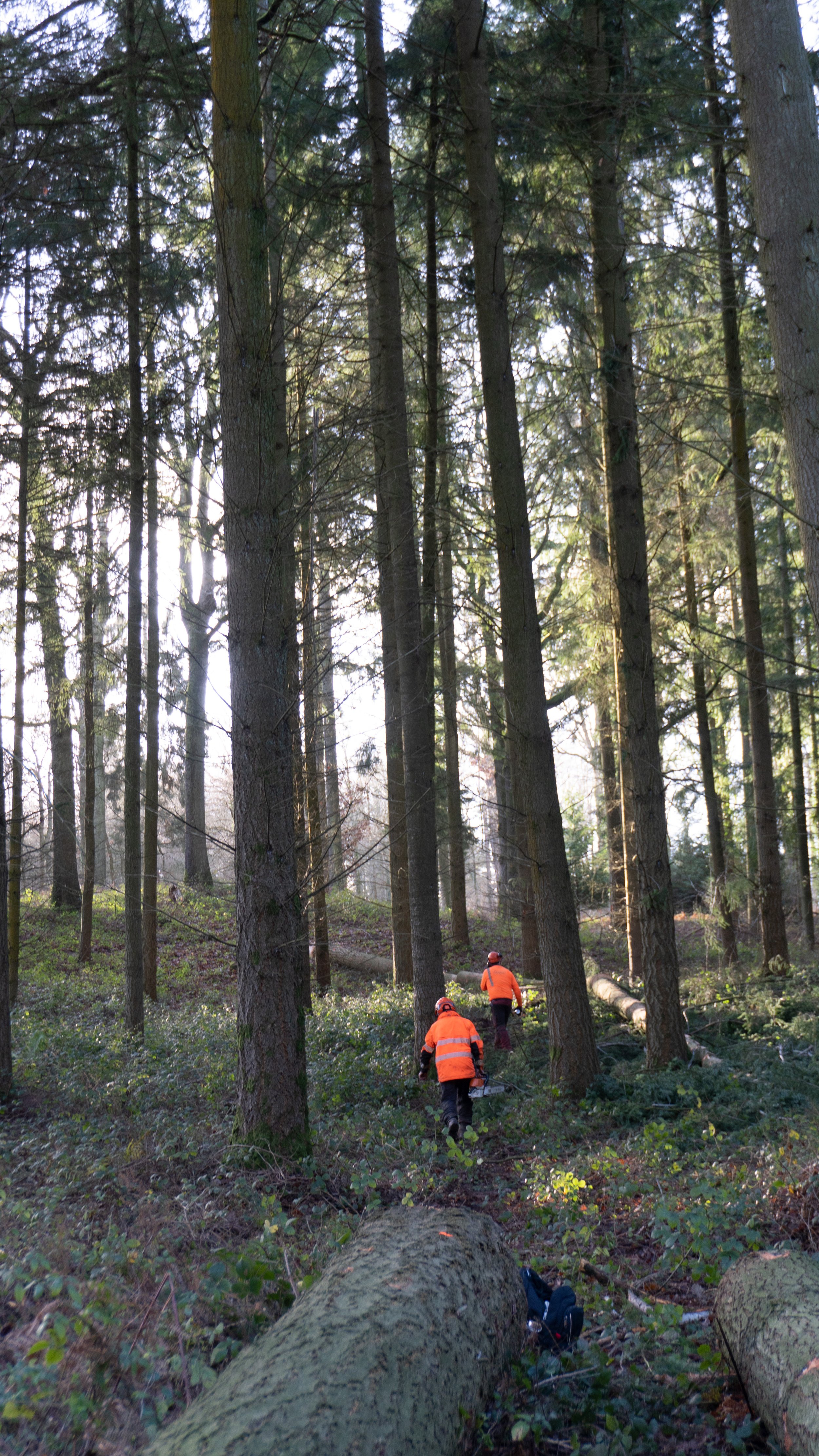This member’s blog from Wilf Meynell of Studio Bark gives thoughtful insight into the creation of ‘Making a Stand’, a new public artwork in City Square, Leeds which uses douglas fir from Whitney Sawmills. To find out more about ‘Making a Stand’, head to the LEEDS 2023 website.
Wilf Meynell Studio Bark
“We create high quality, sensitive design that raises awareness and inspires change. Our pioneering approach improves the life of people, the community and our relationship with the planet.”
Making a Stand demands playfulness, but also offers a place for natural reflection, presenting itself as a vertical stack of timber in the busy City Square in Leeds.
The large 7m timber fins, bark and pith still (mostly) intact stands as a challenge to its context. Lightly touching the ground and connected through a canopy web of steel wires and struts, the sculpture provides a synaptic bridge between standing trees and one of the most ubiquitous household materials; wood.
For 6 months, City Square will be a place where the natural world and the urban realm collide, linked through the supply chain that connects one to the other.
Image by Tom Joy
Studio Bark and Timber
Studio Bark was founded through a collective intrigue in the possibilities of timber. Our first project nearly 10 years ago, rigorously followed the supply chain of Western Red Cedar from standing timber, through felling, stacking, processing and cladding.
This close relationship with resources has in the most part been lost in recent decades, due to the rise and ease of global supply chains. Designers, makers and builders are often disconnected from the provenance of the materials they specify and use.
Through this artwork, we were keen to explore why approximately 80% of the sawn softwood used in the UK is currently imported, whilst also stress testing the capabilities of the UK Forestry industry.
The sculpture demands a timber that is tall, girthy, dead knot-free and hits a high structural grade, whilst being durable to the elements. Not many timber species living in the UK can do all of these things and even fewer UK forests can supply such a specification.
Pausing the Supply Chain
Image by Ellen Christina Hancock
For a typical Construction project, a likely supply route for timber in the UK may follow:
Growing > Felling > Transport > Planking > Processing > Transport > Merchant > Transport > Fabricator > Transport > Site > Use > Demolition> Transport > End of Life (landfill/incineration).
The further down the supply chain, the more bespoke the material becomes. We were keen to pause the supply chain after the initial planking phase, the point at which the resource has the most possible future uses and retains a high resource value.
With light touch processing, designed to have the least impact on the timber, the fins are then stacked vertically in City Square in Leeds for 6 months.
Making Making A Stand Stand
Making Making a Stand stand has been a significant challenge and one that the design team has embraced, with much help from Concept Engineers Structure Workshop and Fabrication Engineers Allt environmental. In simple terms, Making a Stand works like a giant table with 7m long legs.
Like a ‘Stand’ of trees in nature, these 7 metre fins work together with a webbed canopy of steel wire ropes and steel struts, acting in tension and compression.
Provenance and Tracking
Each Douglas Fir fin can be traced back to the precise stump in the forest and a unique code will help us to track it for many years to come. A digital twin of each fin and component has been created, to be hosted online as an open-source inventory of materials. Working with fabricators Stage One, we aim to secure a long and useful future for these majestic Douglas Fir fins.
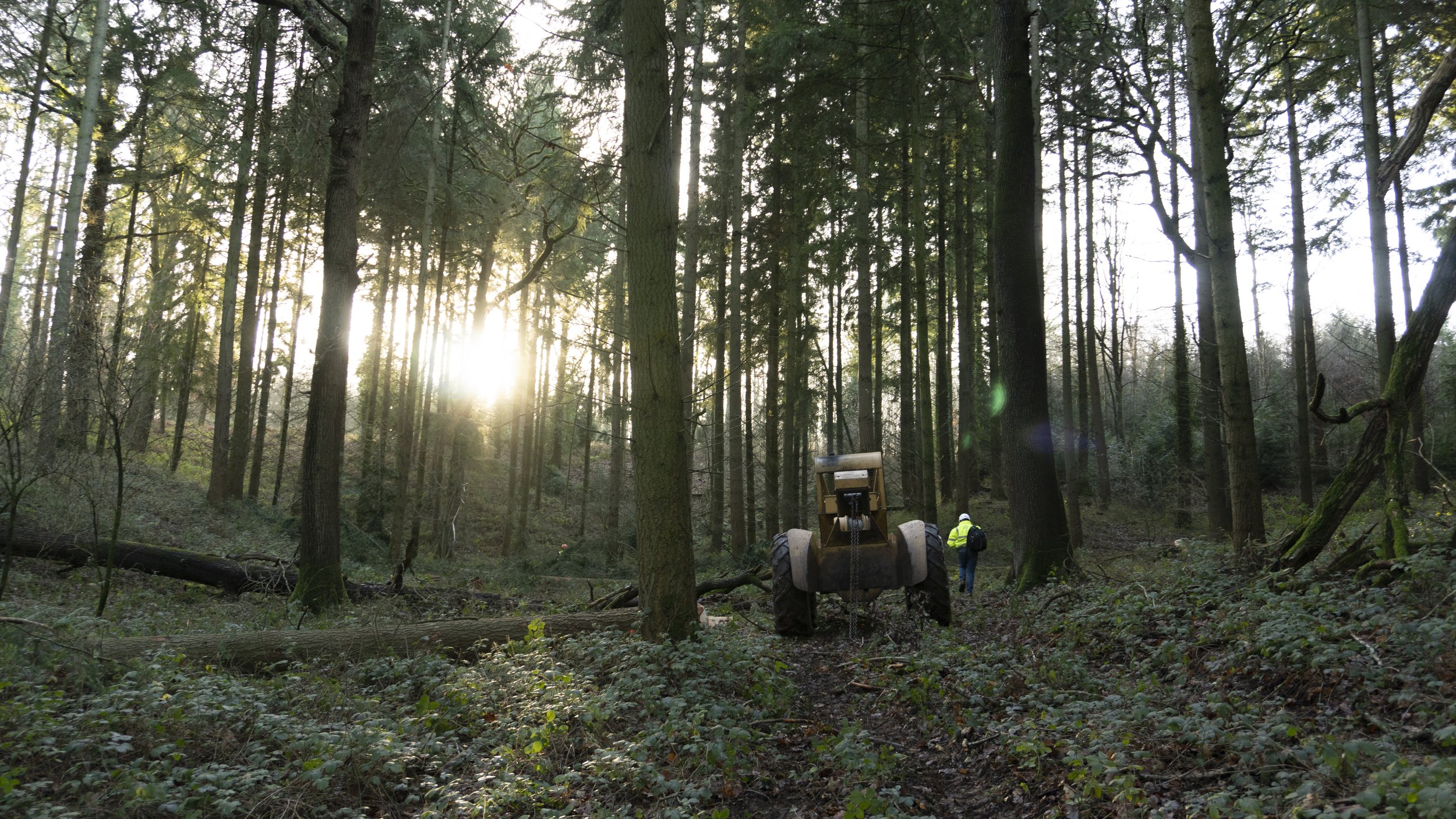
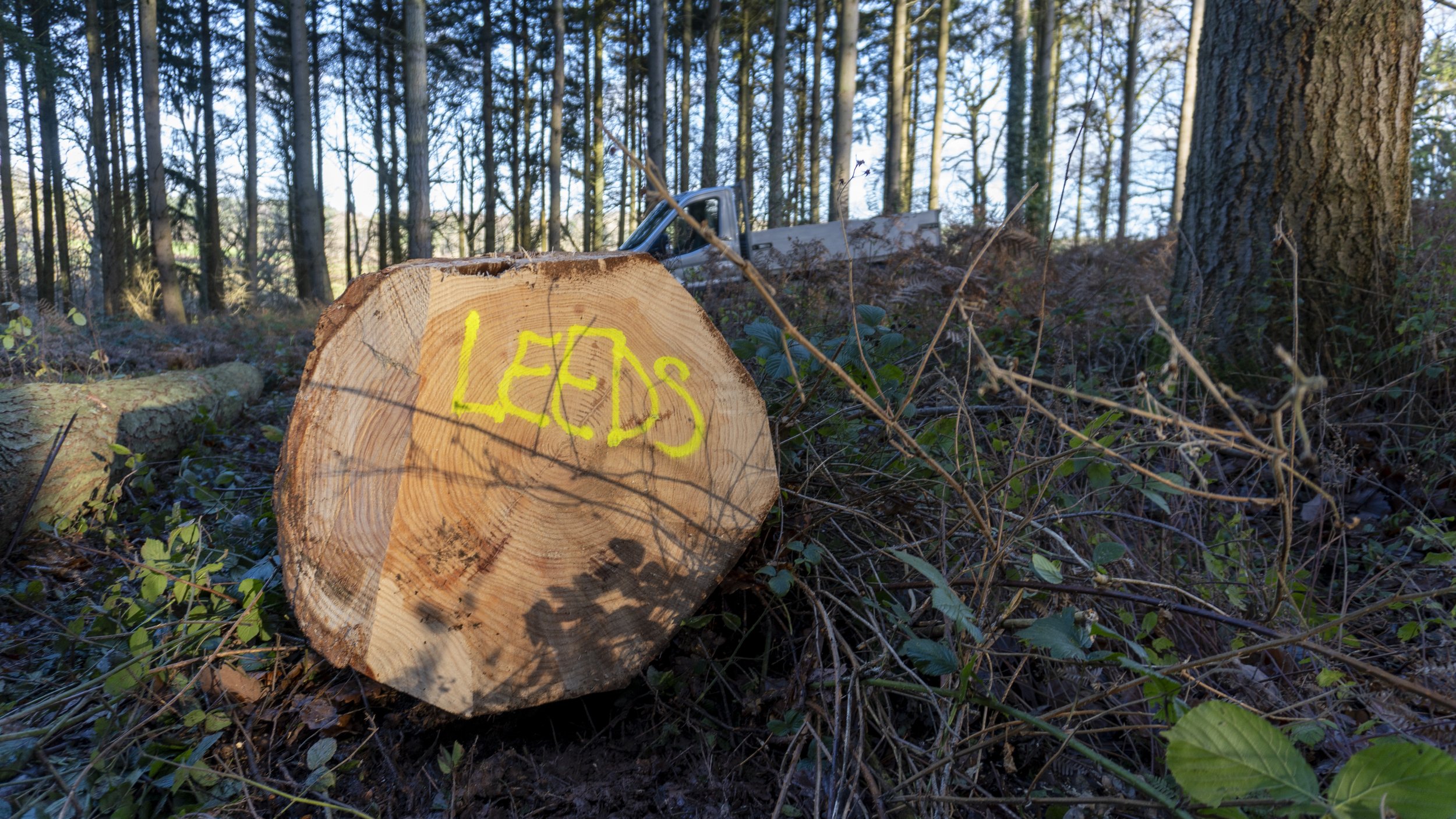
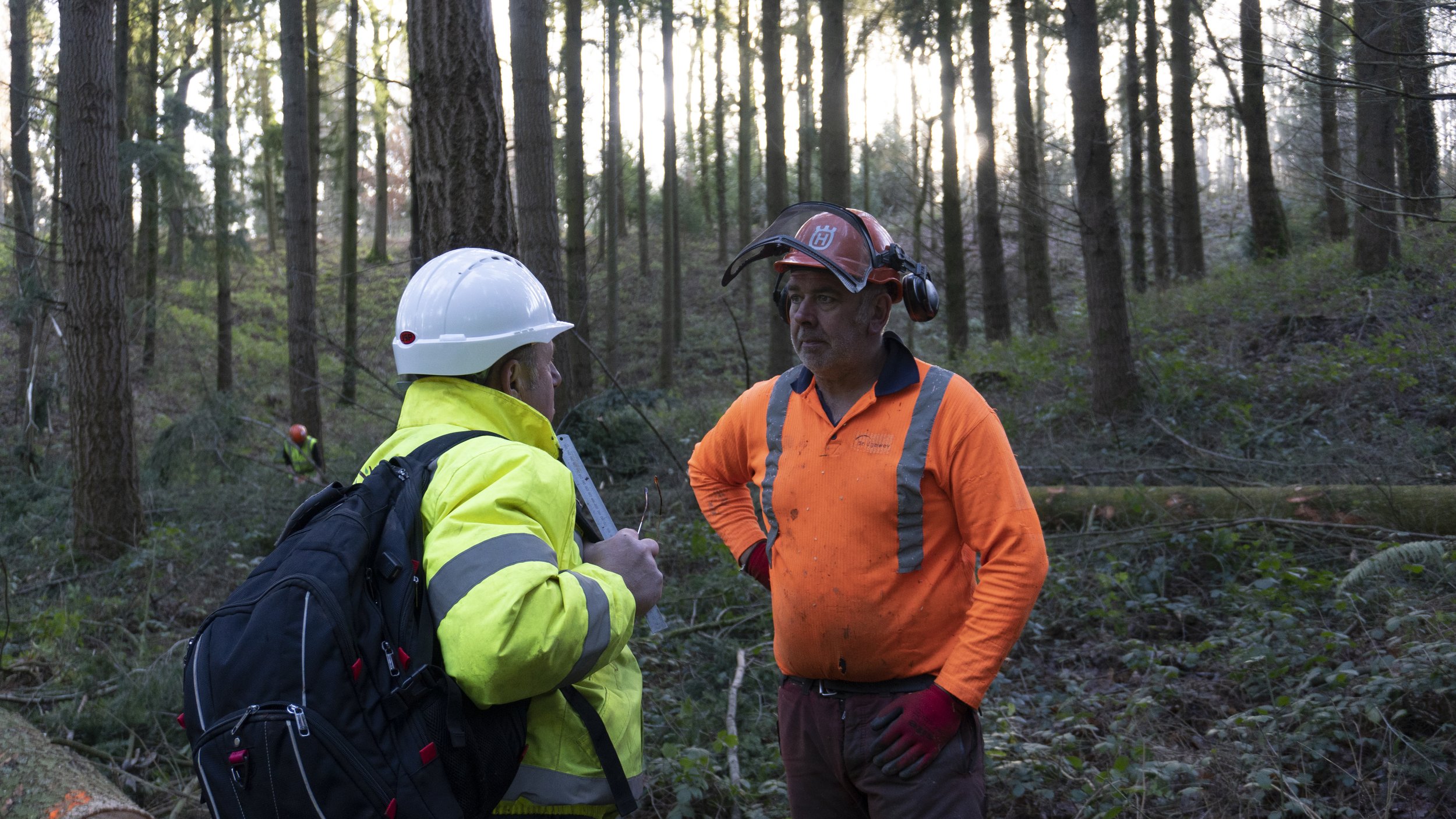
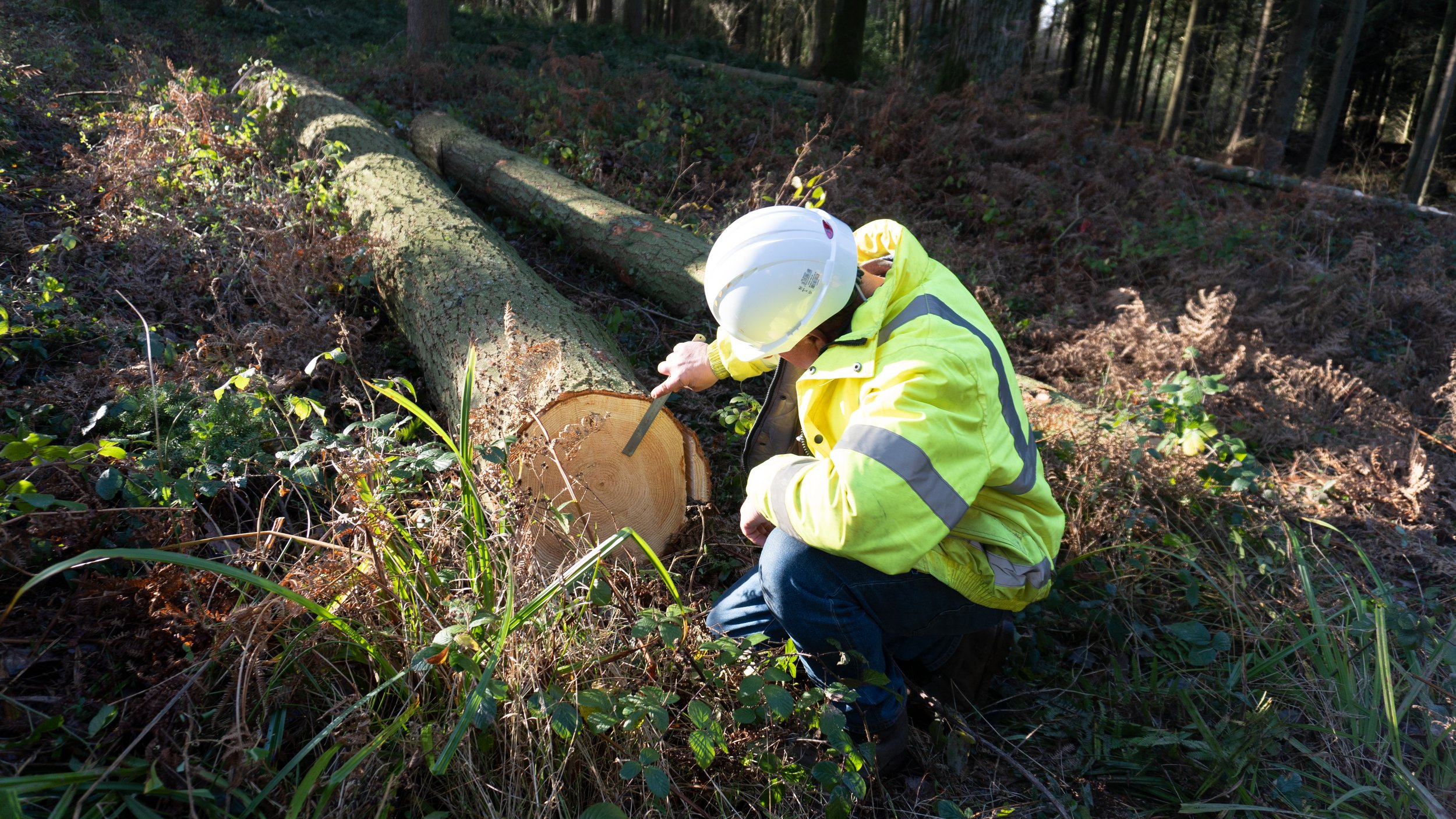
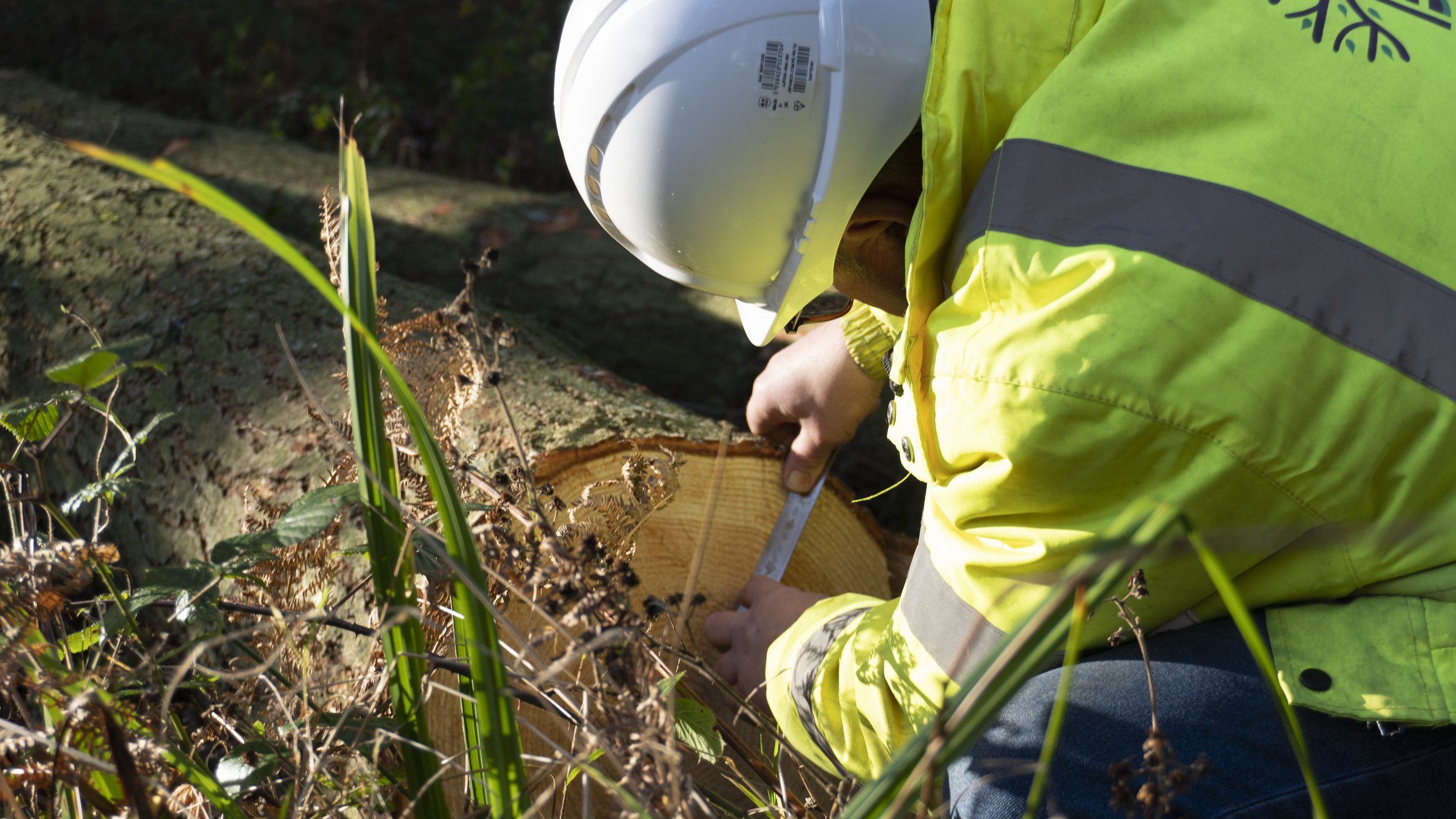
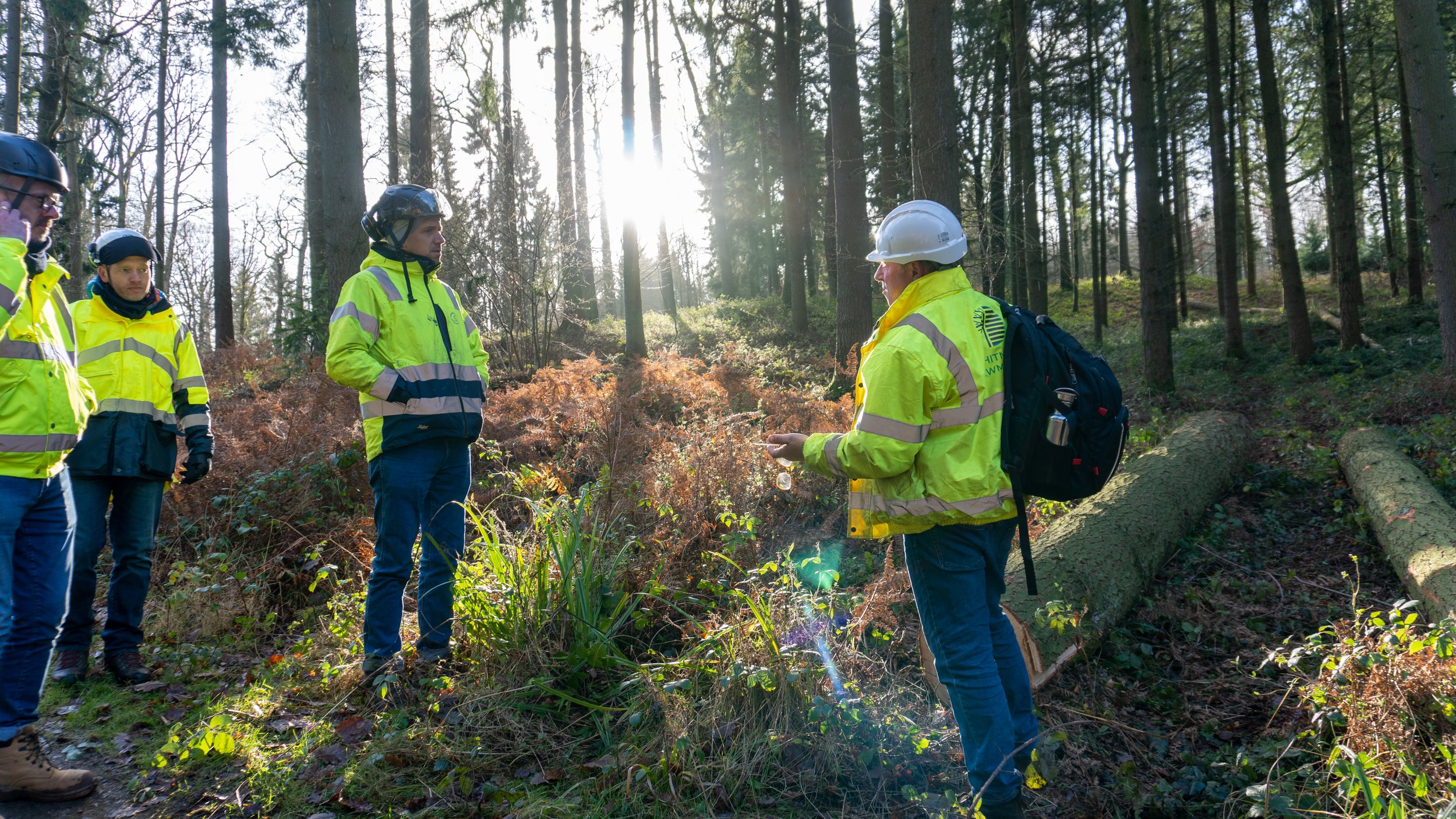
The timber clad, concrete-core seats act as ballast, anchoring the sculpture to the ground to avoid disruptive and carbon intensive foundations. The ballast blocks are precast and will go directly back to the original supplier.
The canopy is made from five 6m Douglas Fir Trusses with a lightweight polycarbonate roof. We plan to follow these materials into their future life, so we can measure the true impact of Making a Stand over its lifecycle.
Circular Economy / Reuse
Image by Tom Joy
The very public nature of this sculpture on council land has required the engineering margin of error to be very significant. These challenges have led to some concessions from the original concept, aimed at showcasing radical circular economy principles. We had hoped to use solely off-the-shelf componentry, that could be inserted back into the supply chain, but having exhausted discussions with numerous specialists, there was nothing quite up to the job.
All the auxiliary structural components are made from galvanised steel and can be readily recycled. That said, the process of recycling steel is very carbon intensive and should be avoided where reuse is possible.
Conservation vs. Production
Image by Tom Joy
Globally we lose approximately 50 football pitches of forest to illegal logging every minute. We need to change our consumerist relationship with our forests if we are to slow the climate crisis. Trees play a vital role as both carbon sinks and havens for biodiversity.
A well-managed species rich productive woodland can deliver both of these desired outcomes, but there is also a time, and importantly, a place for naturally regenerated forests. The common rhetoric pitching conservation against production is often too polarised and we believe that both, can and should, coexist.
Carbon Impact
The alternative to using timber in construction, generally steel or concrete, has a much greater impact on the natural world. For example, delivering making a stand in steel with a concrete foundation would have resulted in over 100 tonnes of CO2e (roughly 200 economy flights from Leeds to Lanzarote)
Conclusion
Making a Stand does not offer a simple ‘oven-ready’ solution to reducing the impact of construction to a theoretical point of climate neutrality. We hope that it Stands to illuminate complexities of land use, resource use and the supply chains that connect them. The industry, the public and politicians must face this challenging reality if we are to turn the tide on the climate crisis.
Image by Tom Joy
Additional reading / listening
The Hidden Life of Trees - Peter Wohlleben. Finding the mother tree - Suzanne Simard. Entangled life - Merlin Sheldrake. Wilding - Isabella Tree. How to read a tree - Tristan Gooley. The man who planted trees - Jean Giono. The secret network of nature - Peter Wohlleben. Podcast: Tree Radicals – Jez Ralph and Kat Giles.
Author: Wilf Meynell
Last updated: 13/07/2023
If you’re a member of Woodland Heritage with a story to share, we’d love to hear from you!





